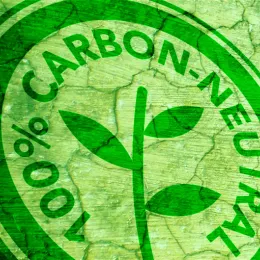Don't be duped by these food ads

Wayhome Studio - stock.adobe.com.
Madison Avenue is alive and kicking, not just on TV but in ads, posts, and videos on social media, YouTube, you name it. Food companies make it so easy. They dress up refined carbs with a dash of vegetables. Or turn up the protein in candy. Or find a new ploy to sell water. What could go wrong?
Sarah Lee veggie bread surprise

“Surprising Fact #1” in the Sara Lee White Bread Made with Veggies Instagram post: “There’s one cup of vegetables in every loaf.*”
Don’t miss that asterisk, which clarifies that it’s the dehydrated equivalent of one cup per loaf. So don’t expect the vitamin-fortified white bread to fill you up like fresh vegetables would.
But even if those veggies were fresh, a two-slice serving would have less than two tablespoons of them. That’s why the ingredient list shows more added sugar than dried vegetables.
A name like “Sara Lee White Bread Made with Sugar” would be more accurate. Now wouldn’t that be a Surprising Fact!
Pringles Harvest Blends con

New Harvest Blends are “blended with sweet potato” or “blended with multigrain,” says a video on Pringles’s YouTube page.
The beauty of “blended with”? It doesn’t mean much. The Sea Salt and Smoky BBQ—both “blended with sweet potato”—have less sweet potato than degerminated (not whole-grain) corn flour, oil, or dried (white) potatoes.
And “multigrain” is marketing-speak for multiple (mostly) refined grains. Pringles’s multigrains have more corn flour, maltodextrin, rice flour, and cornstarch than whole wheat flour. They’re also “blended with” mono- and diglycerides and about two dozen other ingredients, including MSG.
Who knew it was time to harvest the MSG!
Smartwater Alkaline's smart marketing

Smartwater Alkaline has “a higher pH, so I can even elevate how I hydrate,” says actor Pete Davidson in the TV ad.
The bottled water has a pH of 9.5+ (anything above 7 is “alkaline”) and comes “with antioxidant.” Does that matter?
Maybe for selling water and plastic at a premium. In fact, your body regulates your blood’s pH on its own. As for the added “antioxidant,” 15 percent of the Daily Value of selenium is pretty useless. Nearly all of us get enough selenium from our food.
Does Smartwater stay vague about its benefits to leave them to your imagination? A little Smartmarketing, we’d say.
Lipton Peach Iced Tea's spin on added sugar

“Pass me a Lipton?” asks rapper T-Pain in the TV ad for Lipton Peach Iced Tea, which boasts about its “50% fewer calories than regular sodas.”
That’s true. A 16 oz. bottle has 100 calories, half as much as Coke’s 200. But it’s still a glass-half-full spin on sugary tea. You’re getting 25 grams of added sugar—half a day’s max—all from liquid calories that don’t curb your appetite like solid food does.
It’s easy to find bottled teas with less sugar (like the 5 grams in stevia-sweetened Pure Leaf Lower Sugar) or no sugar (like any brand’s unsweetened varieties). Want to waste less plastic? Just brew, ice, and sweeten your own tea with stevia (if you like) ...and skip the Lipton.
Quaker Fruit Fusion fail

“New Quaker Fruit Fusion with real fruit pieces: a bold start to a bold morning,” says the TV ad featuring Quaker’s new instant oatmeal.
What’s so bold about Fruit Fusion? Not much.
Quaker touts “real fruit pieces” but adds few of them. The Blueberry Blackberry has more added sugar (6 grams per serving) than dried blueberries or blackberries. And the Strawberry Peach has more sugar than dried strawberries or peaches. Odds are, Quaker added the black carrot and the beet juice concentrate to boost the oats’ blue and pink hues. (At least the company isn’t adding food dyes.)
Marketers know “real fruit” needn’t mean much. Want to infuse your oats with fruit? Add your own.
MiraFiber Gummies that may not do much

“For 8 grams of fiber, try new MiraFIBER Gummies,” says the TV ad. Just don’t confuse MiraFIBER’s vague claim that its supplement “supports digestive health” with the relief you’d get with regular MiraLAX, the over-the-counter laxative (polyethylene glycol 3350) used to treat occasional constipation.
The 8 grams of fiber in each four-gummy serving of MiraFIBER come from inulin, which can’t hold a candle to regular MiraLAX or to fiber supplements like Metamucil’s psyllium for regularity.
Why? Inulin gets fermented by gut bacteria, so it doesn’t absorb and hold water during its entire journey through the gut. (Water boosts stool bulk and promotes laxation. It’s how both psyllium and MiraLAX work.)
And when inulin gets fermented, it can cause gas. “If gas, bloating, stomach upset, or any other gastrointestinal effects occur, reduce daily serving,” advises MiraFIBER’s label. Gee, thanks.
Snickers Hi-Protein? More like hi-palm oil

“When you’re looking for the satisfaction of a Snickers with the nutrition you desire to power through your day, try a Snickers Hi Protein Bar,” says the TV ad.
The nutrition you desire?
Snickers Hi Protein does have less added sugar (3 vs. 26 grams), more calcium (15 vs. 4 percent of a day’s worth), and, yes, more protein (20 vs. 4 grams) than a regular Snickers candy bar. But Hi Protein is a mix of whey protein isolate, glycerin, inulin, and 18 other ingredients that add up to roughly the same calories (240 vs. 250) and saturated fat (5 grams) as the candy bar. (Blame palm kernel oil. That’s why the coating is “chocolatey,” not chocolate.)
In other words, it’s hi-protein ultra-processed junk.
More on misleading ads
Prevagen ordered to cease ‘memory improvement’ claims
Supplements

How supplements distort science to sell
Supplements

April Fools! Watch out for these food label tricks
Fact vs. Fiction

Is this juice? Or is it alcohol?
Industry Accountability

Is that food really 'carbon neutral'?
Sustainability


